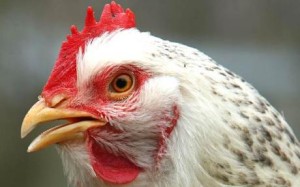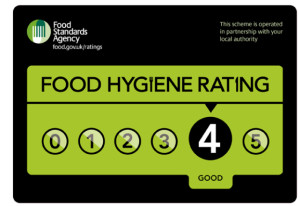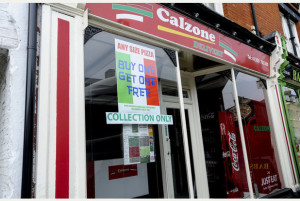The UK Food Standards Agency (FSA) has published the cumulative results from the first two quarters of its year-long survey of campylobacter on fresh chickens.
 Individual results by major retailer have also been published.
Individual results by major retailer have also been published.
Retailers aren’t happy.
One of the companies that has helped develop a way to flash freeze the surface of birds to kill campylobacter bacteria after slaughter, Bernard Matthews, said that retailers had been resistant to the extra cost, which is about 4-5p per bird.
However, the Co-op, Marks & Spencer, Asda and Sainsbury’s all told the Guardian they were supporting the trials of technology which rapidly chills or steams the surface of a chicken to significantly reduce levels of campylobacter.
Tesco said it would be helping to fund a full-scale trial of rapid chill technology with one of its suppliers from January to test feasibility on a commercial scale.
Andrew Large, chief executive of the British Poultry Council, which represents the largest producers and processors, said the industry was focusing on about 10 measures that looked promising, but he warned that there was “no silver bullet” to end campylobacter contamination.
The results to date show:
18% of chickens tested positive for campylobacter above the highest level of contamination
70% of chickens tested positive for the presence of campylobacter
6% of packaging tested positive for the presence of campylobacter with only one sample at the highest level of contamination (>1,000 cfu/g)
 * Above 1,000 colony forming units per gram (>1,000 cfu/g). These units indicate the degree of contamination on each sample.
* Above 1,000 colony forming units per gram (>1,000 cfu/g). These units indicate the degree of contamination on each sample.
In total, 1,995 samples of fresh whole chilled chickens have now been tested, with packaging also tested for most of these samples. Data show variations between retailers but none are meeting the end-of-production target for reducing campylobacter.
This 12-month survey, running from February 2014 to February 2015, will test 4,000 samples of whole chickens bought from UK retail outlets and smaller independent stores and butchers.
Campylobacter is killed by thorough cooking; however it is the most common form of food poisoning in the UK, affecting an estimated 280,000 people a year. Poultry is the source of the majority of these cases.
But-just-cook-it doesn’t cut it and fails to account for cross-contamination.
In response, a number of retailers have introduced ‘roast in the bag’ chickens which help limit cross-contamination by minimizing the handling of the raw chicken in the home.
The FSA advises that the data for individual retailers have to be interpreted carefully. Confidence intervals are given for each retailer and the ‘others’ category. These show the likely range of the results allowing for the number of samples taken.
At this half-way stage in the survey the results show, taking the confidence intervals into account, that Tesco is the only one of the main retailers which has a lower incidence of chicken contaminated with campylobacter at the highest level (>1,000 cfu/g), compared to the industry average. Asda is the only main retailer which has a higher incidence of chicken that is contaminated by campylobacter at the highest level, compared to the industry average. However, the results suggest that none of the retailers is achieving the joint industry end-of-production target for reducing campylobacter.
 And what FSA chicken advice would be complete without a recommendation to “make sure chicken is steaming hot all the way through before serving. Cut in to the thickest part of the meat and check that it is steaming hot with no pink meat and that the juices run clear.”
And what FSA chicken advice would be complete without a recommendation to “make sure chicken is steaming hot all the way through before serving. Cut in to the thickest part of the meat and check that it is steaming hot with no pink meat and that the juices run clear.”
This is ridiculous advice from a supposedly science-based agency: use a tip-sensitive digital thermometer.
Meanwhile, The Guardian revealed this week that Tim Smith, the former boss of the FSA who left the regulator to become a director of Tesco, is said to have contacted a senior official in the Department of Health in June to warn that the FSA’s plans could provoke a major food scare, in an apparent breach of the terms approved by David Cameron for his move to industry.
And Tim Lang, a professor of food policy at London’s City University, told The Guardian the results are schocking and that “public should refuse to buy poultry until this is sorted out. This is a public health scandal easily on a par to those of the 1980s and 1990s and reminds me of the outrage over food adulteration and contamination in the mid 19th century. Have we really sunk back to that level?”
Dear British public, be outraged, act, withhold your money until you can have confidence in what you consume. This may not be orthodox public health strategy but it is definitely what history shows works when standards are as dire as these results show them to be.












